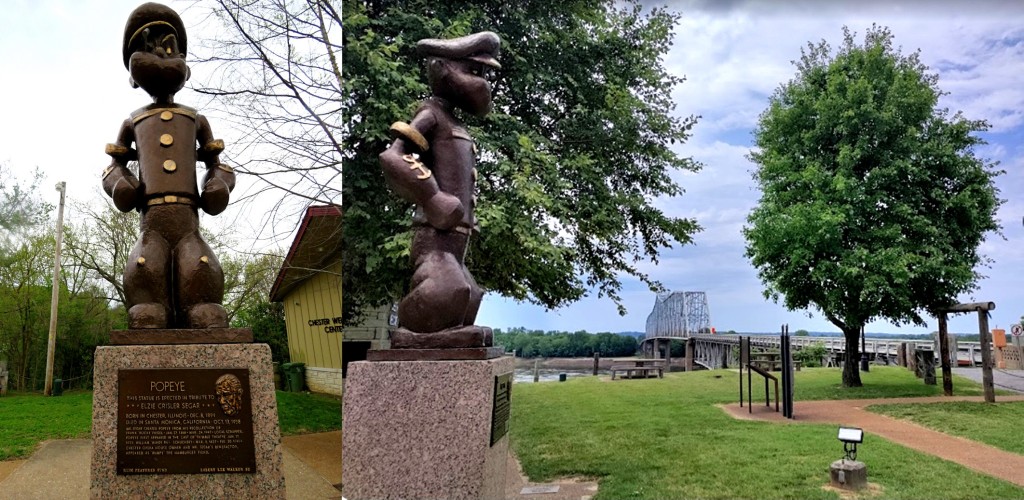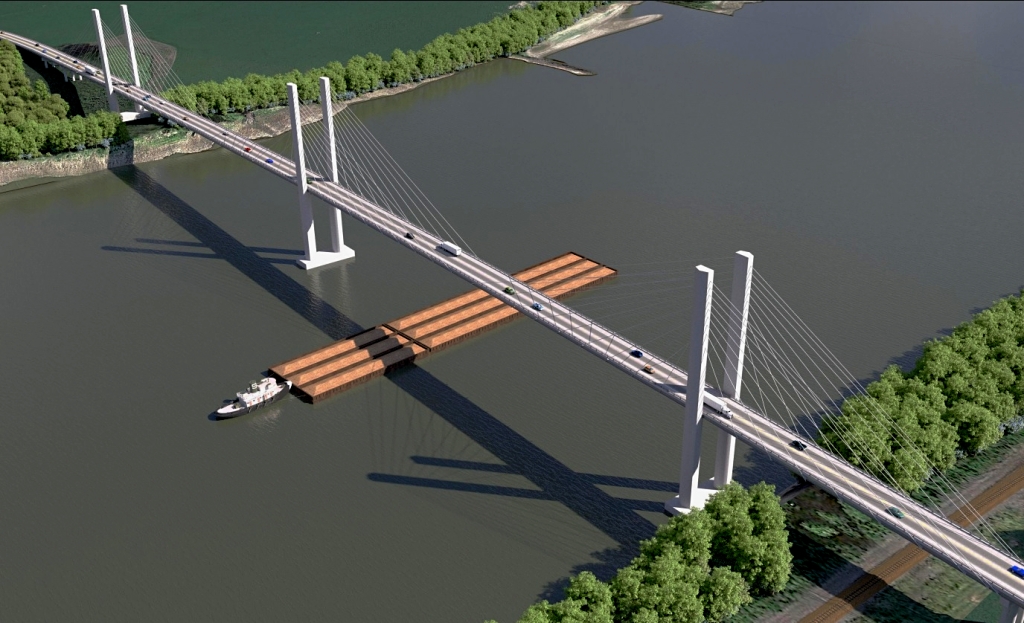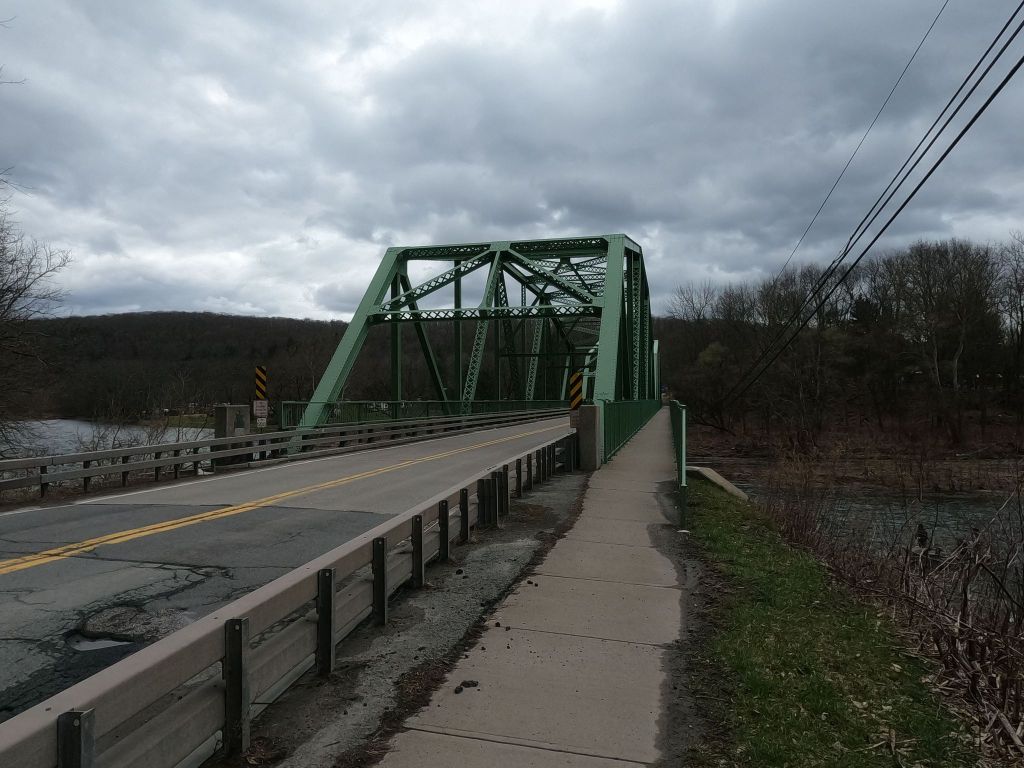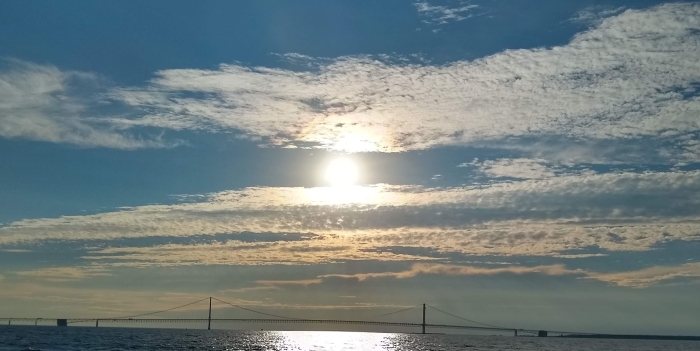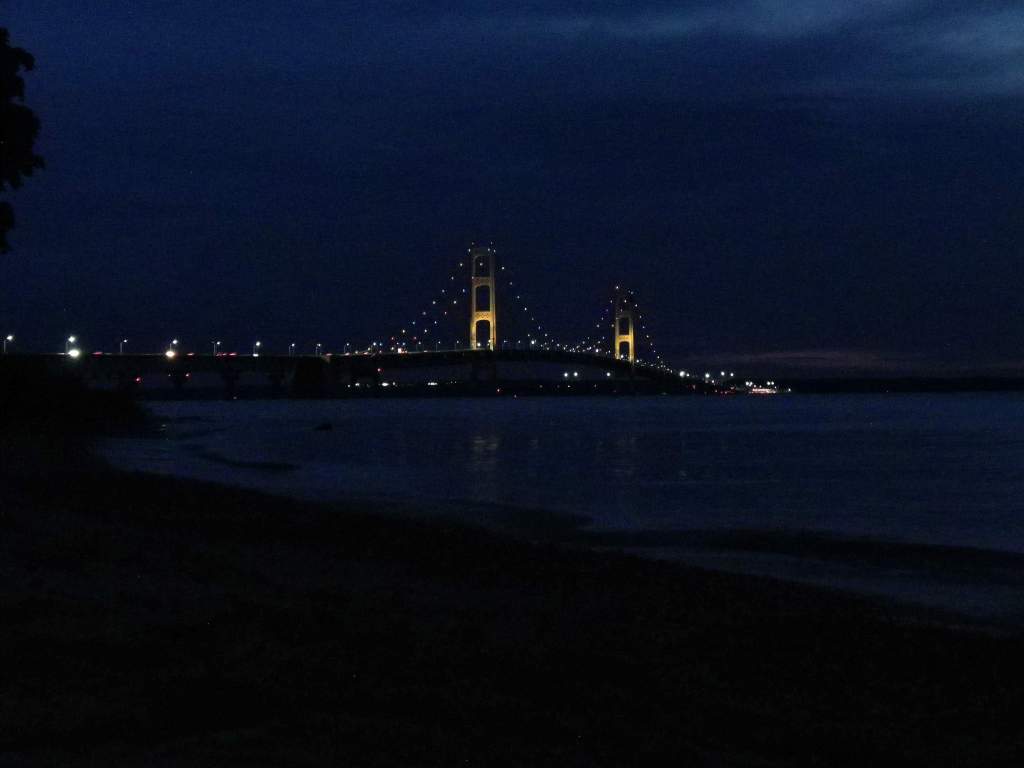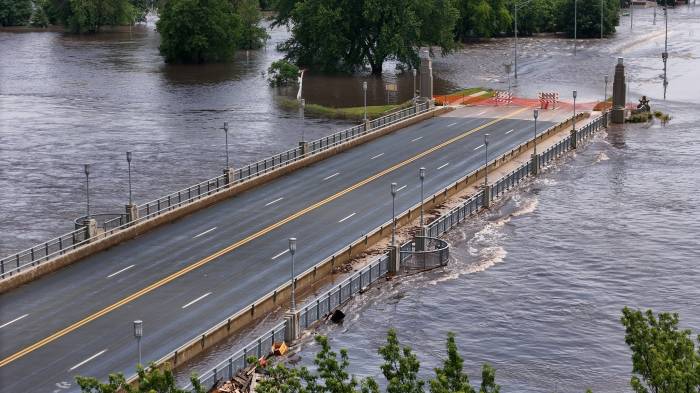

One doesn’t think that Global Warming and its implications would affect us- until it reaches the front steps of our own homes. And that’s exactly what happened this past weekend in my hometown of Jackson, MN and the surrounding regions. In fact, we are at the start of what will be a repeat of the Great Flood of 1993 but with larger rammifications. At that time, the Missouri and Mississippi Rivers almost cut the United States in half with high water stretching as far north as Minneapolis and with a width of over 1000 miles wide. But that didn’t come without widespread destruction.
31 years later, we’re seeing deja vu all over again, thanks to massive rainfall that the regions of the Upper Midwest has been having recently. The Bridgehunter’s Chronicles will be doing a series special on the Great Flood of 2024 and its impacts on bridges, historic and also modern, to show the readers the extent of the damage. Other stories and updates on the Great Flood plus some author’s points based on his upcoming visit to the States this July will be found in the sister column, The Flensburg Files.
**********
Our first Pic takes us to Spencer, Iowa and to the Grand Avenue Bridge spanning the Little Sioux River. The present-day structure was built in 2006 and is characterized by its art deco towers and unique street lighting to cover its plain deck girder design. It’s the third crossing at this site, for it replaced the five-span Luten arch constructed in 1915 by Thor Construction of Cedar Falls. Its first crossing was a Pennsylvania through truss bridge built by Clinton Bridge and Iron Works in 1901. That bridge was relocated to its present-day site on 210th Avenue north of Spencer and is named Old Rusty.
Eric Johannsen took this dronage shot of the bridge shortly before it crested Saturday afternoon. The city was one of the first to see its flood record smashed, for the river crested at 16.93 feet, overwhelming the previous record of 12.91 feet! When looking at the dronage photos and other ground shots, one can see the extent of the damage as residents had just enough time to flee to higher ground and Spencer became the Midwestern version of Venice with all of its historic downtown, Southpark Mall area and residential areas to the west completely underwater. At the time of this post, the waters have receded but a massive cleanup is underway, and with it, the plan to rebuild the businesses and homes from the ground up. This one will be one that will last through the rest of 2024 and beyond for many.
***********
If you have some photos of the bridges affected by the Great Flood of 2024, feel free to contact Jason Smith at the Chronicles, using the contact form here. They will then be showcased with some information that will follow on that.
For those who are traveling in the States this summer and happen to be in the central part of the country, please take extra precautionary steps to ensure you are out of harms way. Avoid areas that are underwater or affected by flooding. Check your lodging possibilities and replan if necessary. If you are in the area affected by the floods, it had better be for helping residents (including sandbagging and clean-up) and not for disaster tourism. Put the people first before the phone and no fear mongering in social media. Take extra care of yourself and your loved ones.
************
Not just the bridges matter, but your community matters the most. ❤













